Table of Contents
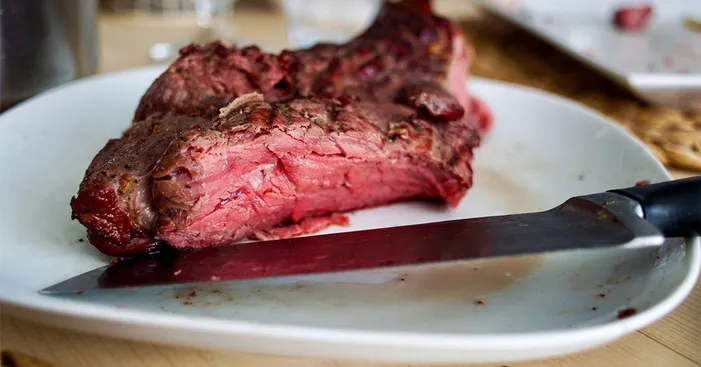
Have you ever wondered what it would be like to eat a yak?
If you’re like most people, you probably haven’t given much thought to this animal that lives high in the mountains of the Himalayas and North America.
But yak meat is actually a delicious and healthy alternative to beef that deserves more attention.
In this blog post, I’ll tell you everything you need to know about yak meat: how it tastes, how to cook it, where to buy it, and why you should try it.
You might be surprised by how much you enjoy this exotic meat that has been a staple for centuries in countries like Tibet, India, Mongolia, and China.
General facts about yak:
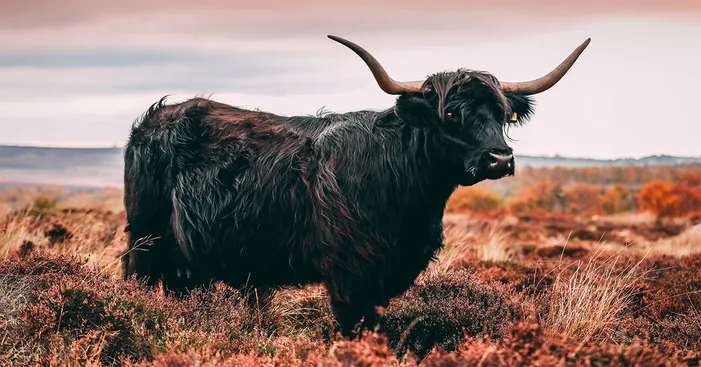
Yak: overview
Although it shares similar characteristics with bison and beef, the yak is larger and has longer horns.
Its fur consists of two distinct layers: a long, lush outer layer that forms a skirt around the animal, and a dense, woolly undercoat that serves as protection against the cold and is shed in the summer.
The eyes of the yak are relatively weak, but its sense of smell and hearing are very acute.
Furthermore, it is a social and gregarious animal that lives in herds of 10 to 30 individuals composed of cows and steers in summer.
However, during the winter the males join the groups for breeding and a herd can sometimes reach up to two hundred individuals.
In case of danger, they defend the herd by positioning themselves in a circle around the females and the young.
The yak can withstand temperatures below -40°F thanks to its double fleece, but also to the oily and anti-freezing substance that its skin secretes.
Yak meat vs beef:
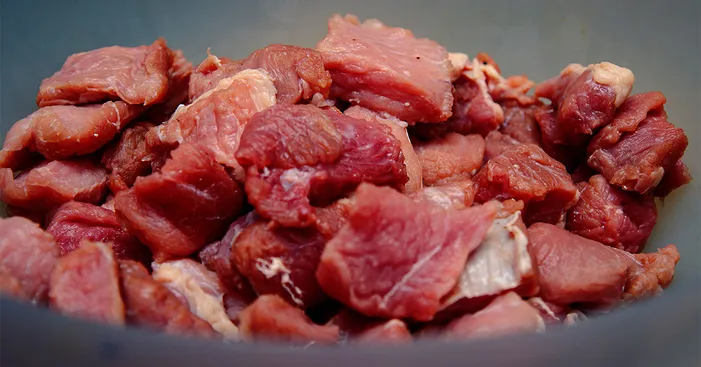
Yak meat has a high nutritional quality, as it contains little fat and many other nutrients like amino acids.
But this is not enough to make it taste good.
Most of the beef we usually eat is raised on foods that give it a balance of fat and lean, and make it tender and tasty and most people are used to this.
On the other hand, Yak meat is tough and dry because it has less fat.
This may be an advantage for health, but not for taste as it doesn’t fit the criteria of “tasty” meat.
Moreover, the practices in Tibet are different from those in the continent.
In Tibet, yaks and other livestock are killed without bleeding, and processed quickly to preserve their “umami”.
But this raw flavor is unacceptable to most people in other regions, and they find it hard to appreciate.
Yak meat is characterized by its low-fat content and thick muscle fiber, which gives it a more rustic flavor.
In addition, the meat of yak is firmer, fuller-bodied, and juicier than regular beef, which is why it is often processed into jerky or cured meat for marketing.
In fact, Yak meat has a woodier flavor, a harder consistency, and a stronger taste; regular beef has a milder taste and a less intense flavor.
An ally to Tibetan villagers:
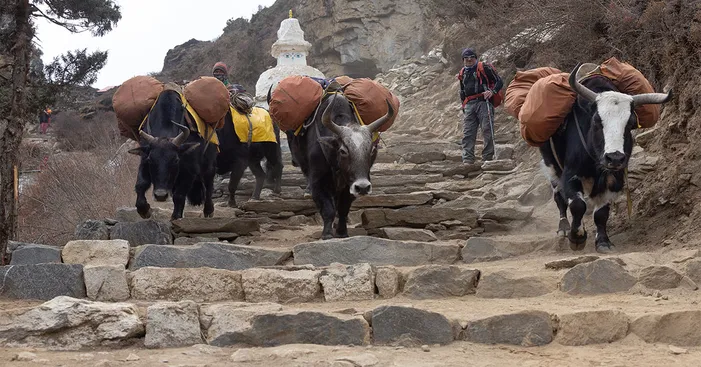
This wild animal called the Tibetan ox, has become a domesticated animal throughout Asia.
It has a rather violent character in its natural state, but it can be tamed in breeding.
It feeds on grass all day long and is essential to the survival of the poorest Tibetan villages, now under Chinese domination.
The Tibetan nomads and the yaks have a relationship of remarkable harmony.
The Sherpas who accompany trekkers and tourists on the “roof of the world” in Nepal could not exist without yak, revered as a sacred animal.
The yak serves as a means of transportation, a source of milk, and a source of tasty and nutritious meat.
It lives in symbiosis with the poorest populations of the Asian plateau.
Chinese poachers despite its protected status and its vital role often target the yak for the Tibetan people.
Yak meat nutritional values and health benefits:
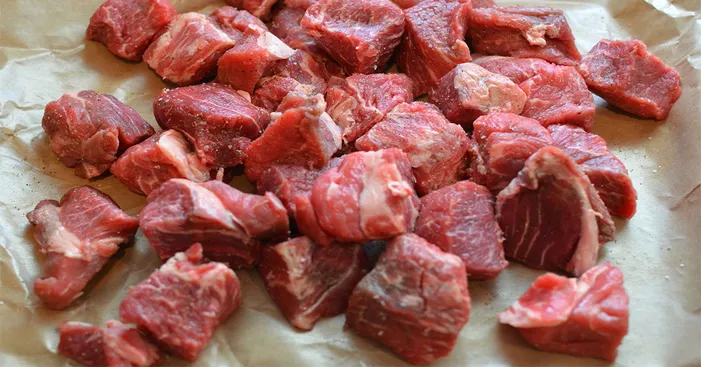
Nutritional values:
Yak meat is characterized by its thick grain and low internal fat content.
Its color is an intense red, due to the strong presence of myoglobin and the lack of marbling.
This is due to the adaptation of yak to high altitudes.
Yak meat is also rich in vitamins and essential minerals such as iron and zinc.
However, it contains little copper, manganese, and magnesium.
The fat is yellowish because of the carotene it contains.
Yak meat has an excellent water retention capacity of over 92%.
This has a positive influence on the taste, tenderness, and nutritional value of the meat and therefore contributes to its high quality.
This data counts for a serving of 3.5oz (100g) of cooked yak meat:
- Calories: 112
- Protein: 20g
- Cholesterol: mg
- Fat: 3.5g
- B1 vitamin: 8%
- B2 vitamin: 8.9%
- Calcium: 1.2%
- Iron: 16.7%
- Magnesium: 6%
- Phosphorus: 27%
- Potassium: 13.6%
- Sulfur: 20%
Health benefits:
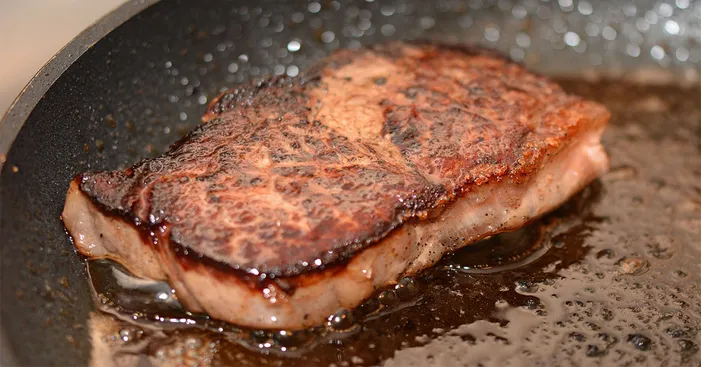
Nourish blood and slow down aging:
Yak meat is rich in trace elements, especially iron, which can stimulate the production of red blood cells, nourish the blood and prevent iron deficiency anemia.
Yak meat also contains zinc which can stimulate protein synthesis in the human body, promote muscle growth, be a natural antioxidant, slow down aging, and inhibit cancer cells.
It is very beneficial for improving human health.
Provide nutrients:
Yak meat provides a variety of nutrients that are beneficial to the human body.
Not only does this meat contain a lot of high-quality protein, with various essential amino acids, but also carotene, calcium, phosphorus, and other trace elements that are very present in yak meat.
It is low in fat, which allows people to eat without gaining weight.
Strengthen the body:
Yak meat also has an important role in strengthening the body.
It can improve the body’s resistance to disease, promote human development and help the body recover from illness.
Also, it can repair damaged cells and tissues, speed up the healing of discomfort symptoms, and have a positive effect on the human body.
Precautions before you consume yak meat:

Parasitic risks:
Yak meat can be infected with certain parasites such as liver flukes, etc., which can cause food poisoning if not properly cooked or treated.
High cholesterol:
Although yak meat is relatively low in fat, it contains a lot of cholesterol and prolonged consumption may increase the risk of cardiovascular diseases.
Improper method of consumption:
Yak meat should generally be cooked or processed well before consumption, otherwise, it may alter its taste and health benefits.
Using yak meat:
Yak meat is suitable for a variety of culinary preparations and can usually be cooked like beef.
For example, the eye of yak, which is a fatty part, can be cut into thin slices to make fatty beef or shabu shabu, which is very tasty.
The yak tongue can be marinated or fried in ghee.
Yak backbone, which is close to the vertebrae and not much used, is very tender.
It can therefore be fried or sautéed, as in fried steak, shredded fried yak, or fried yak meat with small red wine.
The yak breast, which is in the abdomen and contains more fat and connective tissue, is a lean fatty part.
It is not suitable for quick cooking, but rather for slow cooking, as in baked tomato potatoes, baked radish, or braised yak beef.
Yak stick bones, which come from the leg bones, are very rich in protein and calcium.
They can be used to make soups, such as yak bone broth or beef bone broth with mushrooms.
Finally, yak offal can be eaten cold in salads, hot pots, or soups, such as cold mixed offal or various hot pots.
Yak meat with ginger:
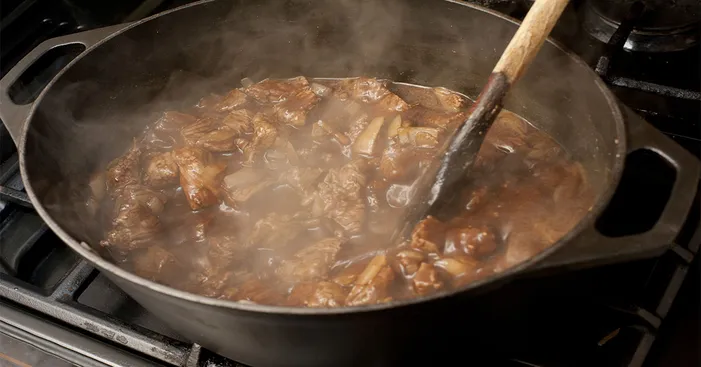
- 2 lbs. of yak meat.
- 6 cloves of garlic.
- 12 tbsp. of fresh ginger.
- 5 onions.
- 6 tbsp. of olive oil.
- 2 cups of the cooking broth.
- Soy sauce.
- 1 stalk of lemon grass.
- 1 tsp of salt and pepper.
- 4 tbsps. Of cornstarch.
Preparation:
- Cut up your yak meat if it is not already cubed.
- Chop your onions, grate your ginger if not ground and grate your garlic cloves.
- In a casserole, heat the olive oil, then sear the meat cubes over high heat.
- Lower the heat and add all the ingredients except the cornstarch, salt, and pepper.
- Add the broth and let it cook over low heat for 2 hours (covered).
- Before serving, and if necessary, dilute your cornstarch in the water, so that the sauce of your yak is thicker.
- Add salt and pepper to taste, and serve with rice or steamed vegetables such as carrots or green beans.
Yak steak with wood sauce:
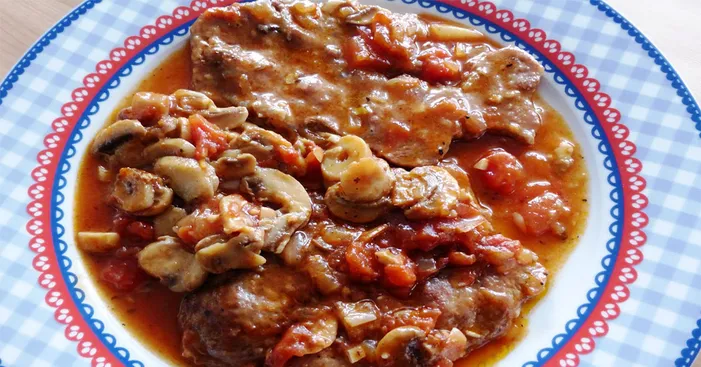
- 4 yak steaks (3 ounces each)
- 3 tbsps. Of butter.
- 2 ounces of duck liver (50g).
- 1 cup of water.
- 2 finely chopped shallots.
- 1 clove of garlic finely chopped.
- 1 tbsp. of chopped parsley.
- 4 cups of chopped mushrooms.
- 1 cup of heavy cream.
- 4 tbsps. Of tomato paste.
- 1 tsp of salt and pepper.
Preparation:
- Take the meat out of the refrigerator 30 minutes before cooking so that it is at room temperature.
- Melt 20g of butter in a frying pan, and grill your meat for 2 to 3 minutes on each side for a rare result.
- Add salt and pepper after cooking (so that the meat does not dry out).
- Wrap in aluminum foil and let sit in a warm place (60 degrees) for 15 minutes.
- Now for the sauce, melt 20g of butter in a saucepan with a thick base.
- Put the shallots and cook gently until they become translucent.
- Add the duck liver, the tomato purée, and the glass of water, and stir the sauce until it becomes thick.
- Lower the heat again (the sauce should be kept warm, but not cooked!).
- Add the mushrooms, garlic, heavy cream, parsley, and salt and pepper.
- Taste and adjust the seasoning if necessary, keep the sauce warm before serving.
- Sprinkle with chopped parsley for color.
- Put the meat on a plate, place the sauce in a small bowl next to it, or serve it next to the meat.
Buying yak meat:
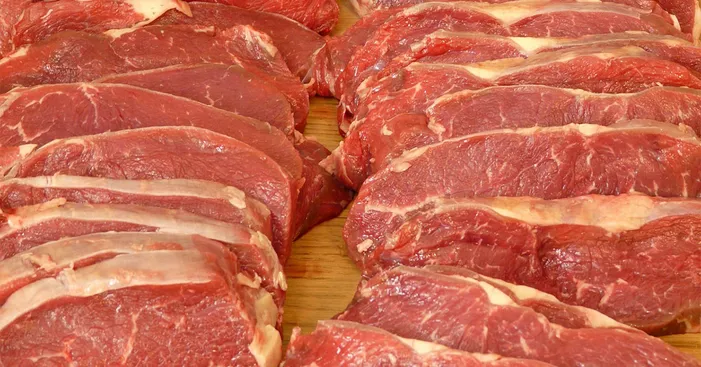
Look at the color: normal yak meat is bright red, while young yak meat is dull. If the meat is black, there is a problem.
Squeeze your hand: Squeeze the meat with your hand to see if any moisture comes out, which is a good indicator of the water content of the meat.
Good yak meat is bright red, shiny, firm, and has fine muscle fibers.
The fat is solid and white or milky white. Older meat is purplish-red and less tasty than tender meat.
